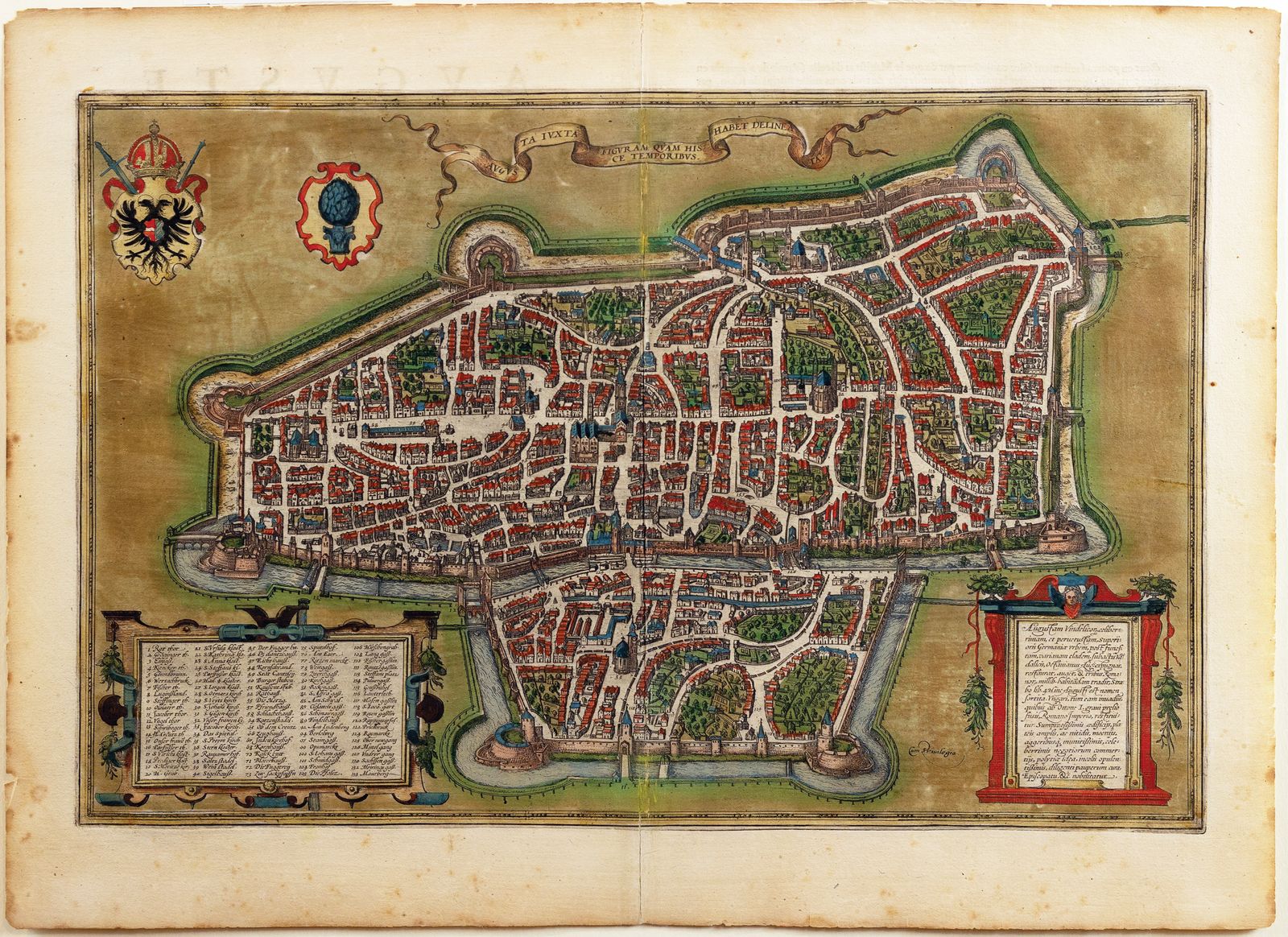from: June 2025 3
Braun & Hogenberg, [Augsburg, Germany] Augusta Iuxta Figuram.
Braun & Hogenberg, [Augsburg, Germany] Augusta Iuxta Figuram.
Couldn't load pickup availability
BRAUN, Georg (1541-1622) & HOGENBERG, Frans (1535-1590).
[Augsburg, Germany].
Augusta Iuxta Figuram...
Engraved map with original hand color.
From Civitas Orbis Terrarum, Cologne, c. 1588.
16 3/8" x 21 1/8" sheet.
TRANSLATION OF CARTOUCHE TEXT: Following the catastrophic defeat of Varus and the subjugation of the Vandals, Octavianus Augustus conquered, rebuilt and enlarged Augusta Vindelicorum [Augsburg], a widely famed and very ancient city in Upper Germany. According to Strabo, he settled 3,000 Romans here, from which the town took the name Augusta. Otto I repulsed a Hungarian attack in a heavy battle and restored Augsburg to the Empire. Augsburg's glory is based on grand buildings, spacious and magnificent squares, extremely defensive walls, moats and embankments, its significant turnover of goods, its internal constitution, its wealthy inhabitants and its care for the poor as well as its episcopal see, among other things.
COMMENTARY BY BRAUN: "The city's authorities dedicate themselves to caring for the poor. As well as maintaining a hospice and an orphanage, in periods when the plague or syphilis was raging, they also established a hospital, the Blatterhaus, to tend to and accommodate the afflicted. Furthermore, in 1519 and at their own expense, the Fugger family built about 100 houses for needy but respectable citizens in the suburb of St James, in effect a distinct quarter called the Fuggerei."
The bird's-eye view of Augsburg shows the individual groups of buildings very clearly, including the Fuggerei (72, bottom left), mentioned by Braun and founded in 1514 as an enclosed housing complex for impoverished citizens. The cathedral (32, right) is Romanesque with Gothic elements. Directly beside the town hall (52) in the city's centre lies the church of St Peter am Perlach (35). Its tall tower, called the Perlachturm, was remodelled in the 17th century and is a city landmark. The present town hall was begun in 1615 in the Renaissance style. The church of St Anne houses the burial chapel of the Fugger family; Martin Luther stayed at the affiliated monastery (23, above St Peter, am Perlach) when he was summoned to Augsburg to defend his theses before the imperial diet in 1518. On the left-hand edge of the map, the Benedictine abbey of SS Ulrich and Afra (17) dated from the 15th century when Augsburg was home to some 30,000 inhabitants. During this period, Augsburg was a centre of German economic and intellectual life and frequently played host to imperial diets. (Taschen)
![Braun & Hogenberg, [Augsburg, Germany] Augusta Iuxta Figuram.](http://aradernyc.com/cdn/shop/files/110.jpg?v=1750711003&width=1445)

